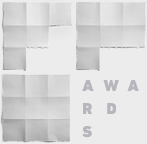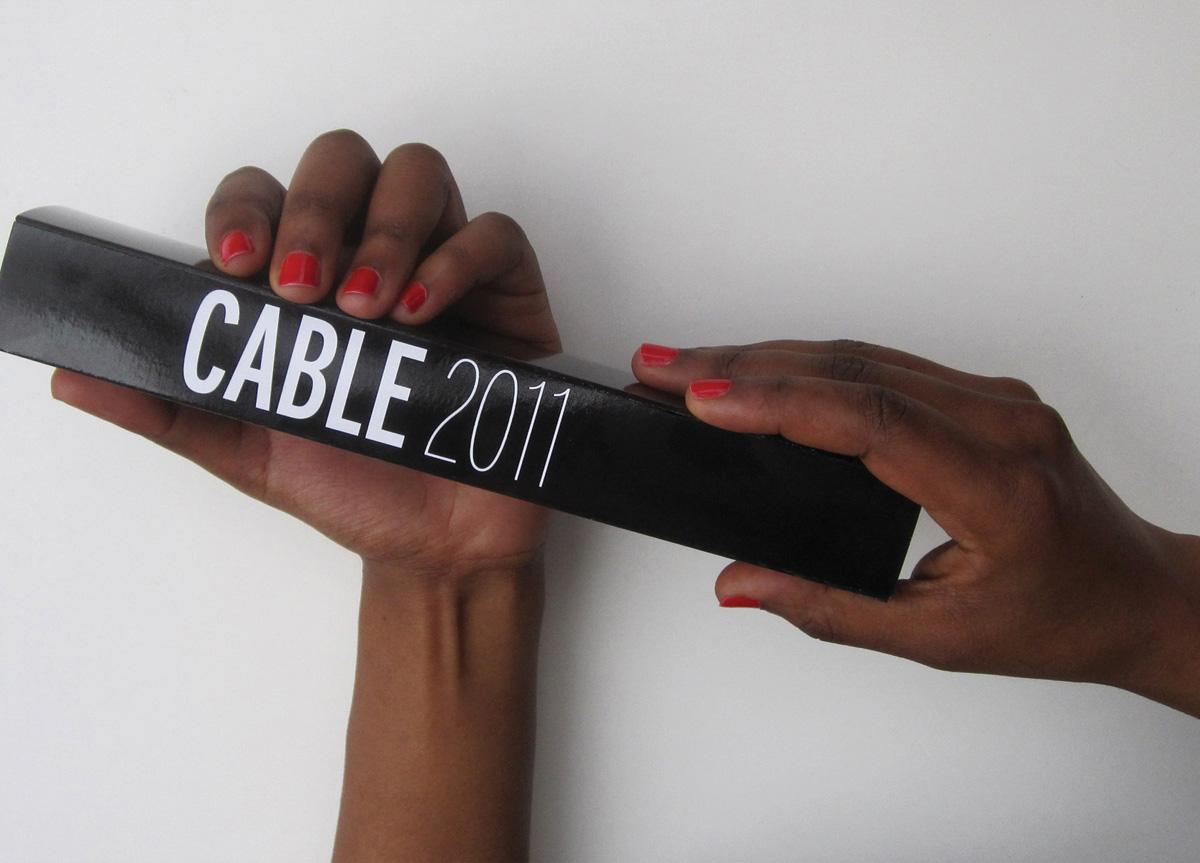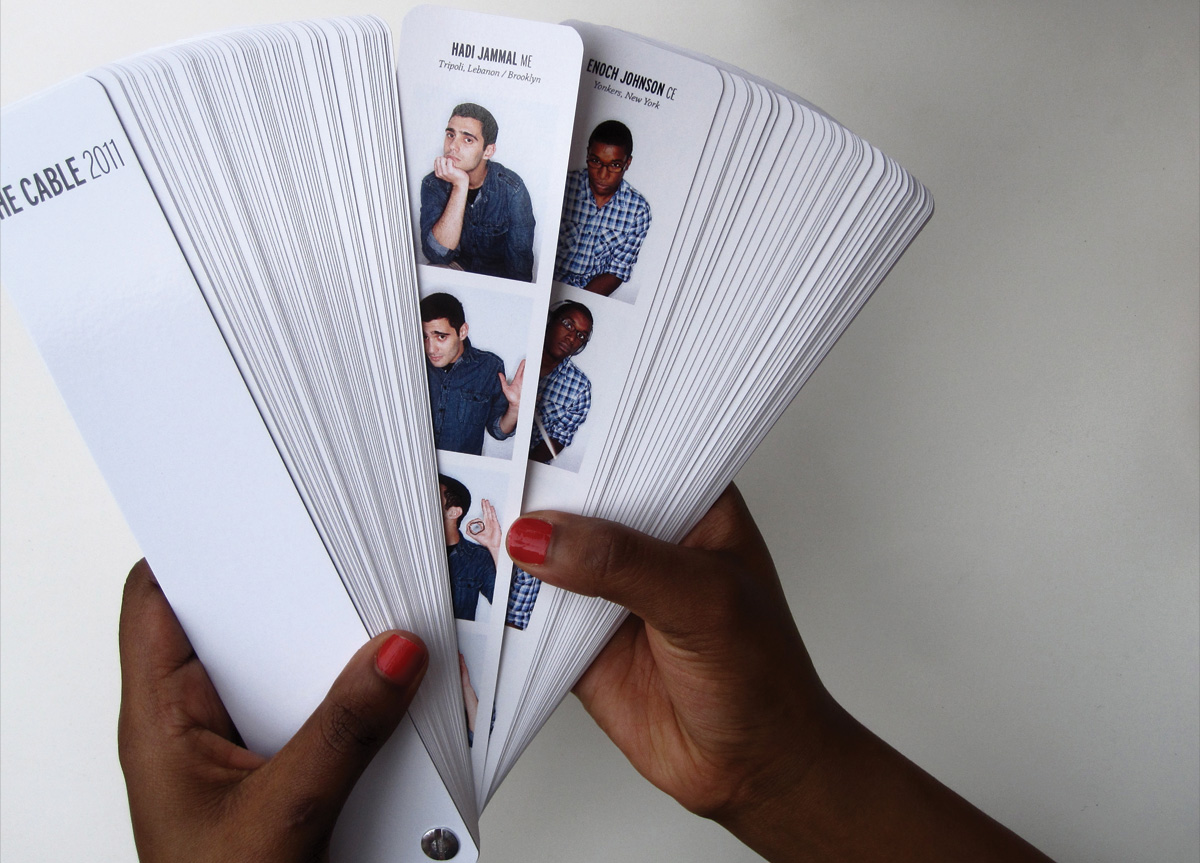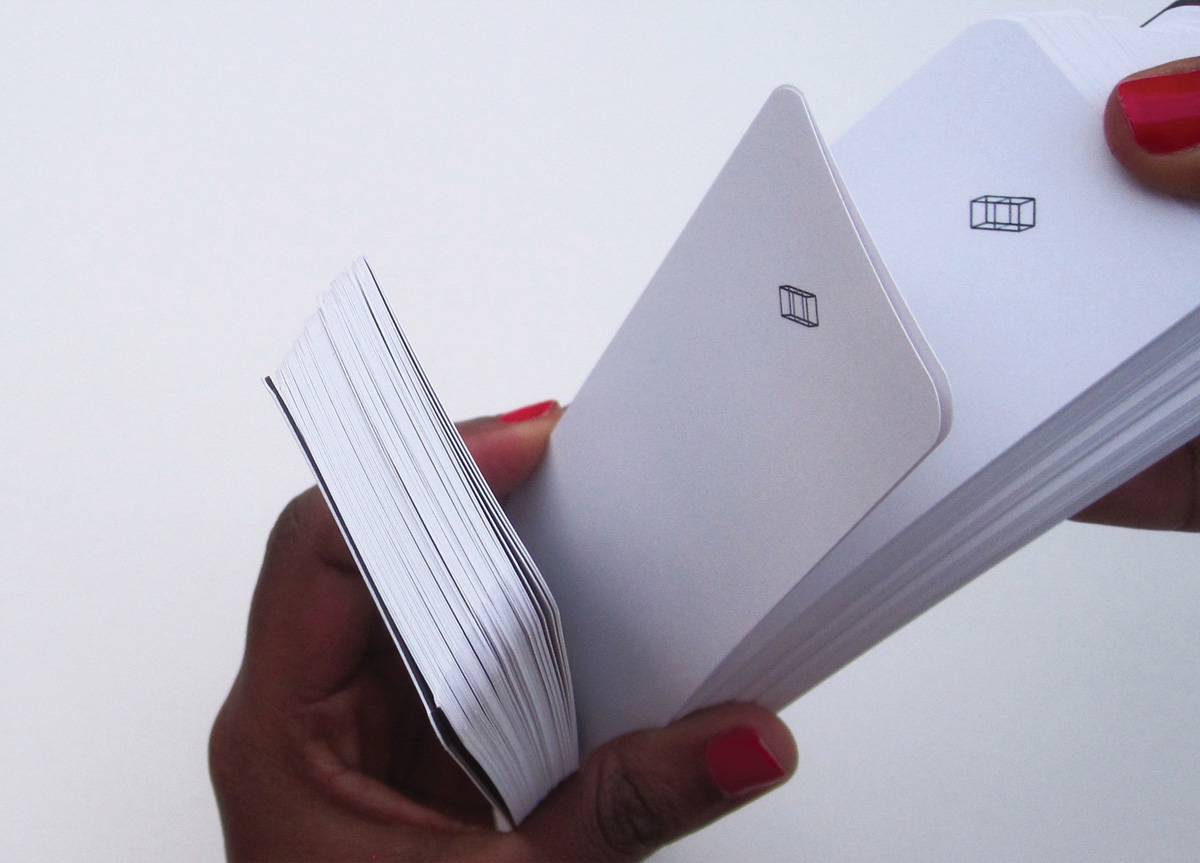CLIENT
The Cooper Union for the Advancement of Science and Art is a privately funded college in New York, NY. Founded by inventor, industrialist, and philanthropist Peter Cooper in 1859, The Cooper Union offers education in art, architecture and engineering, as well as courses in the humanities and social sciences.
BRIEF
The Cooper Union senior council wanted a yearbook that would be novel in form and feel celebratory and fun (the typical cloth-bound yearbook is pretty tired). It was also key that it maintain dignity and gravity because it’s an object that alumni will, hopefully, show to their spouses, children, and grandchildren.
APPROACH
The challenge in designing the book was to make a product that united a very unique and multifarious student group. I choose to do that literally by making a book that can fan and display every student at once, and figuratively, by engaging the classmates in collaborative photography sessions where they learned a great deal about each other in the process. The information that appears in the book is minimal (name, concentration, and hometown) but the exchange that went on during the photography and input sessions that developed this book was major.









